
Conducting exit surveys using Feedback Requests
Feedback requests can help automate your off-boarding process.
Table of Contents
The reviewee
Feedback Requests need to be about a specific member of your account, so first, you’ll want to create your company as an account member.
Once you’ve done that, you can create a feedback request about your company. Click Create > Anytime Feedback > Feedback Requests.
Add your company user as the subject of the feedback. Then, you’re ready to add a title.
Tip: Include the exiting employee’s name in the title to make their feedback easy to find.
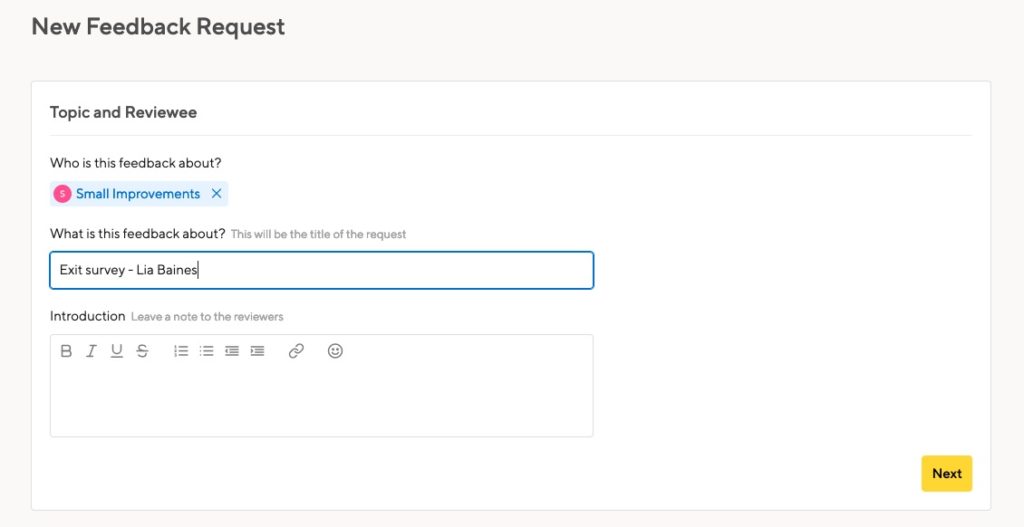
The reviewers
Next, add the people who are leaving as reviewers. You can add multiple people as reviewers, but if you create one survey per person, the results will be easier to find later on.
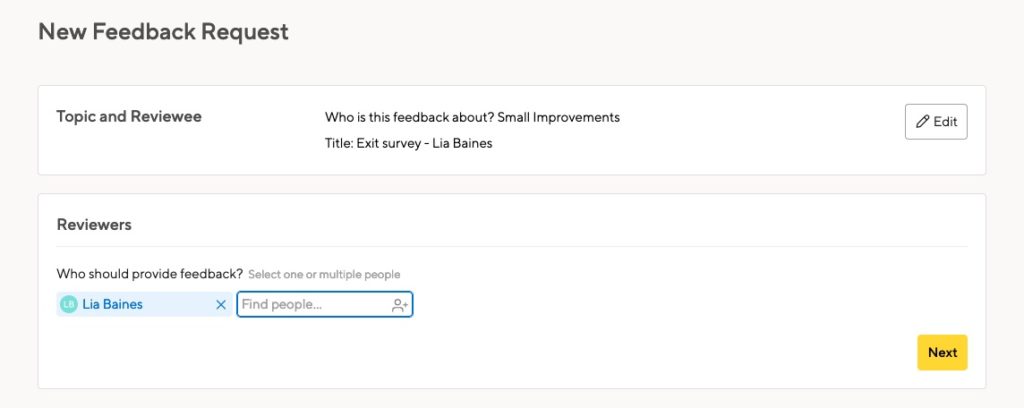
The questionnaire
Use a template to create your questionnaire. You might not want to ask engineers the same questions as marketing folks, and your interns might have different feedback entirely. Set up as many templates as you need!
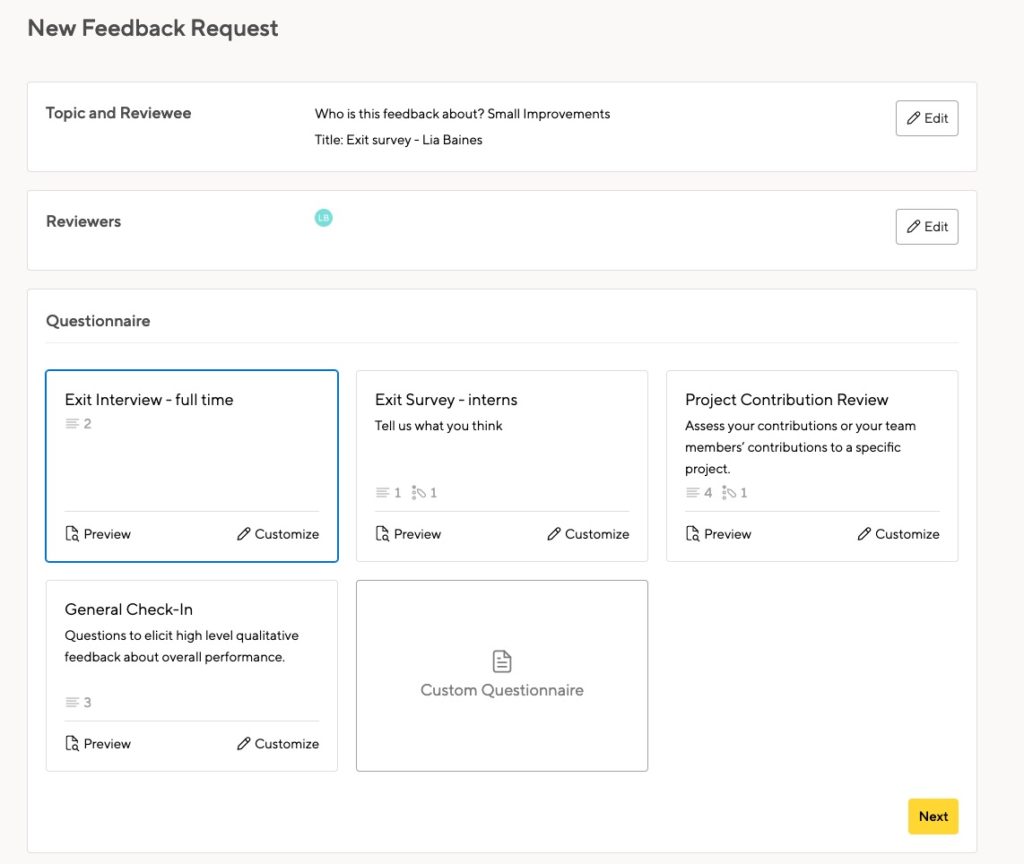
When you create the feedback request, you’ll get a chance to add more questions or edit the ones in the template. You can tailor each exit survey to the individual.
Permissions
Now decide on the permissions. Who should see this feedback?
If you’ve set up the reviewee as your company, people in your HR team will likely be able to sign into that account. If that’s the case, allow your company reviewee to see everything.
This will collect all the exit surveys in one place. You won’t have to wade through other feedback requests to find the results.
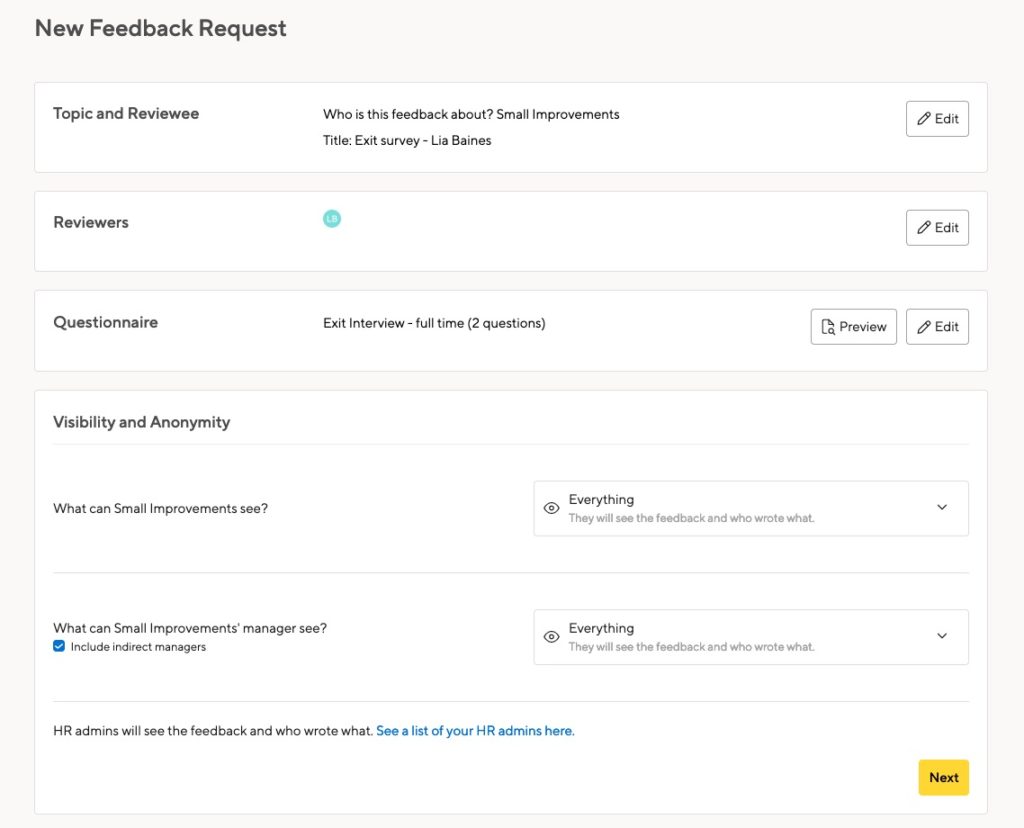
Viewing the feedback
As the creator of the request, you can see the feedback on the Company > Feedback Requests page. But you’ll probably have other requests on that list, making finding all the exit surveys hard.
Instead, log in as the company user, and go to their Feedback page:
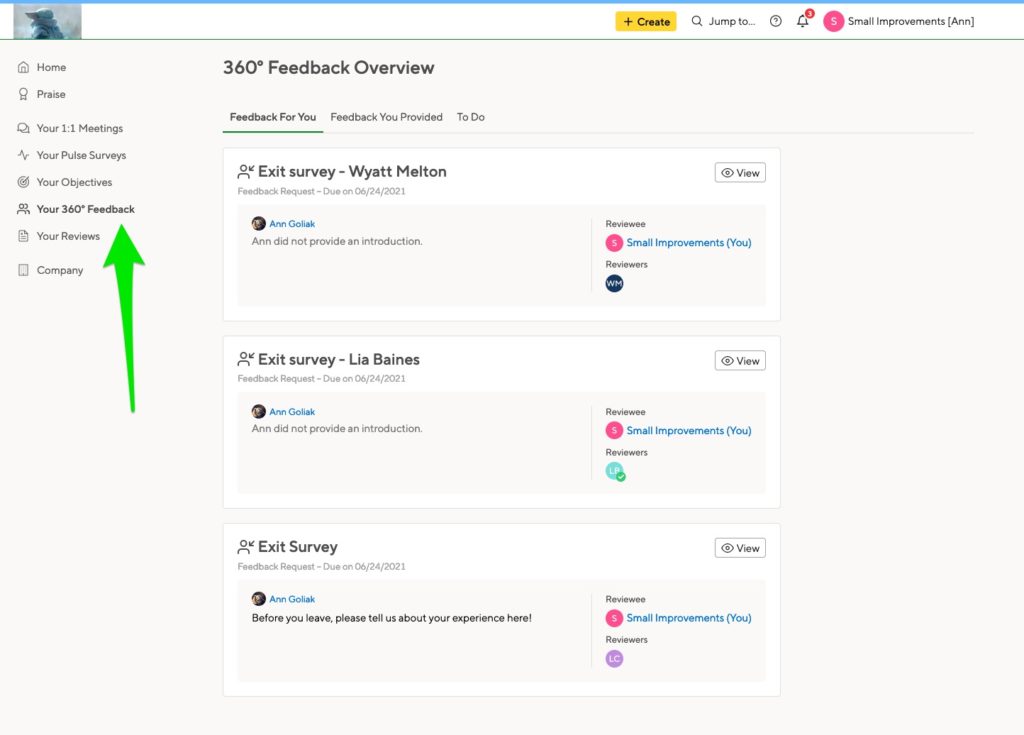
You’ll see everything in one list, and it’s easy to click on the survey you want.
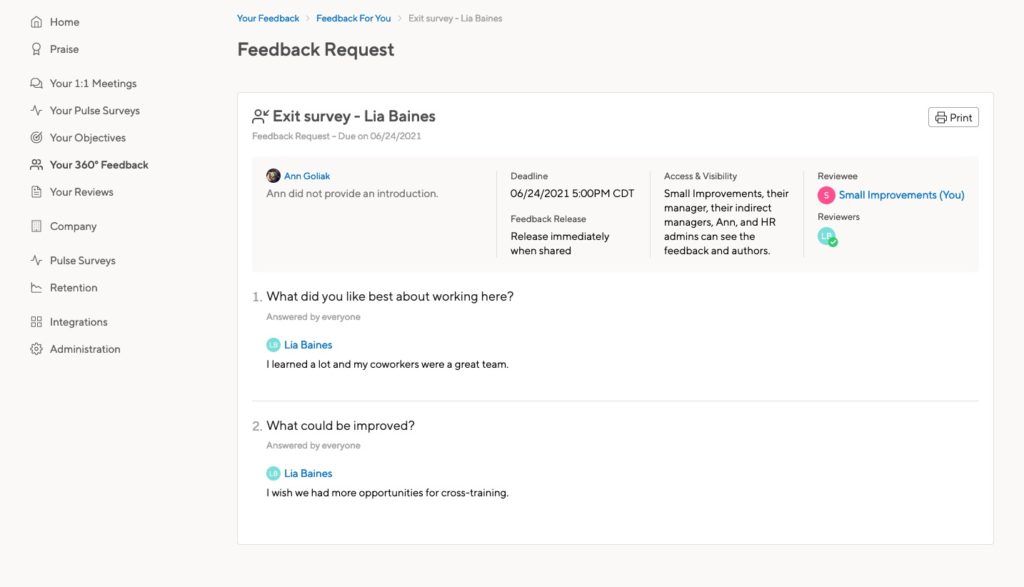
Discover more resources
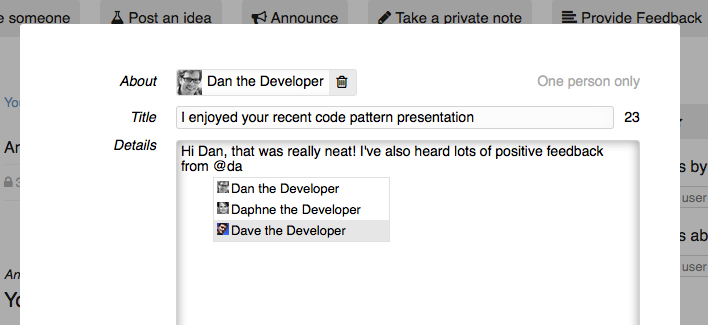
We improved the messaging feature: Mentions, filtering, design and more
Messaging was the first feature we implemented into SI. The feature itself stood the test of time well, and we’re quite proud that modern companies such as Buffer are using a feature that we designed and implemented over 4 years ago. But the user interface was starting to look dated, so we’ve just rolled out…

You’re not too busy for 1:1 meetings
No excuses! Regular check-ins with your employees are essential to helping them realize their potential.

Should I be S.M.A.R.T.?
A first-person look at setting professional objectives in accordance with the S.M.A.R.T. method.
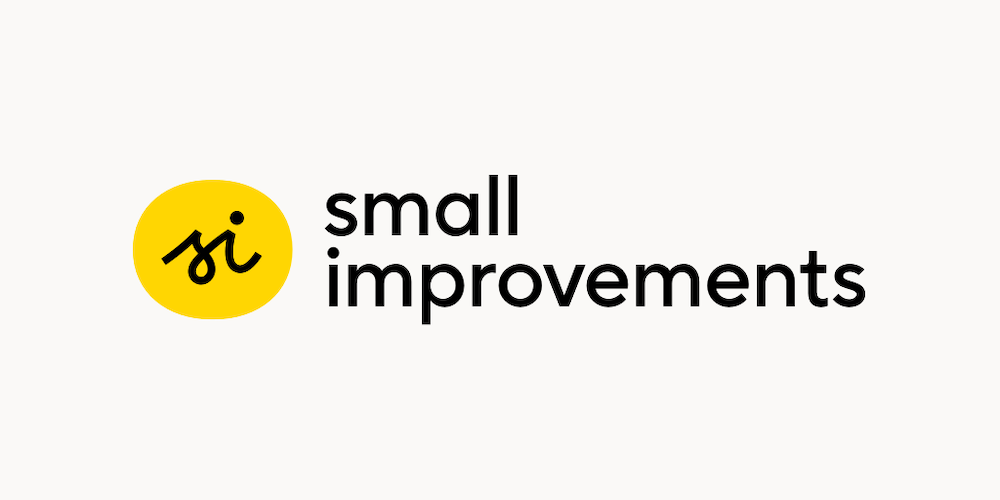
Status update: Sub-ratings in performance reviews, https, and database upgrade completed
We’ve been busy, and as you can see on the changelog, there are a few new entries.New https certificateWe have added proper HTTPS support: You can now at last access Small Improvements at https://www.small-improvements.com, and we have a nice “extended validation” certificate, making your browser bar go green. Neat. We will be enforcing https from…

The three components of an effective performance management process
Performance management processes are highly organization-specific, but an effective approach will involve planning, cultivation, and accountability.

Building an effective performance review questionnaire
Want to create more effective questionnaires for your next performance review? Here are some tips and tricks on how to structure your questionnaire, the types of questions to use, and more.